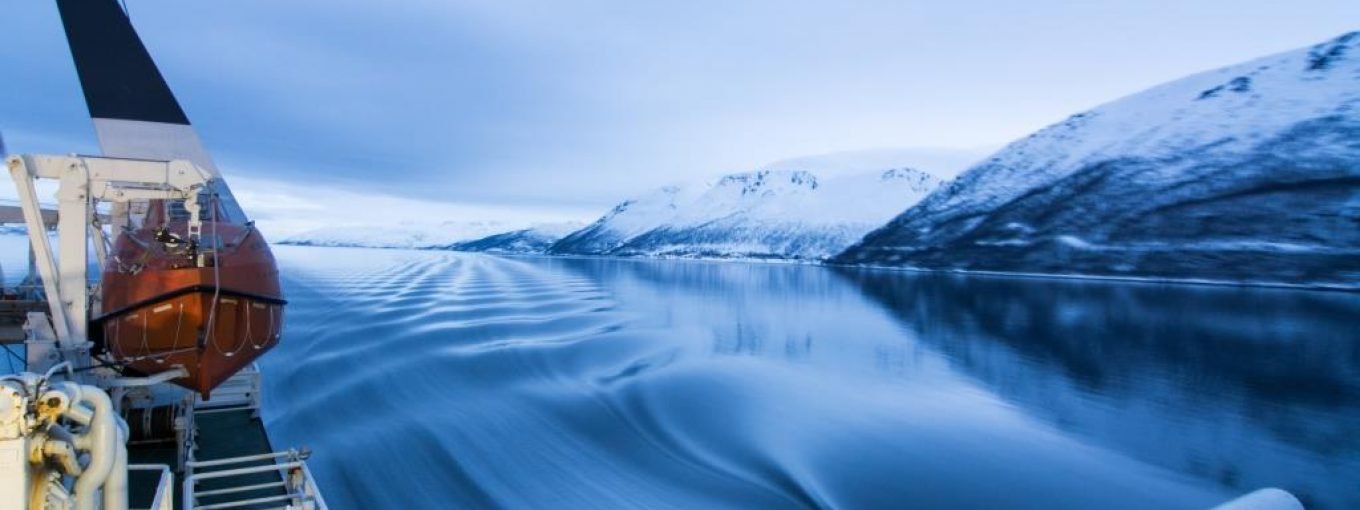The Arctic is the fastest changing environment on the planet, supporting diverse yet still poorly understood ecosystems. Changes in the ocean and sea-ice environment of the Arctic will generate major but, as yet, unknown changes in Arctic ecosystems. These are affecting biological processes at every level of organisation – from genetics and physiology to food webs, biogeochemical cycles, species distribution and whole ecosystems.
The Arctic is also intrinsically tied to global processes, whether they are climatic, environmental or socio-economic. Consequently, the Arctic is responding in unknown ways to profound changes in the physical environment as well as to multiple natural and anthropogenic events that place stress on Arctic ecosystems (stressors). The scale of these challenges facing the Arctic is immense and is further compounded by the rate of change.
Retreating and thinning sea ice
The most obvious change in the Arctic Ocean is the retreating sea ice during the summer months. Not only is the sea ice retreating but it is also becoming thinner over time. Satellite-derived estimates of sea-ice thickness and age have shown a shift from thick multi-year to thinner first-year ice. Some climate models have predicted an ice-free summer in the Arctic Ocean within a few decades.
Open water and river runoff
An important consequence of the retreating summer sea ice is more areas of open water. These are increasing in size and becoming ice-free for longer periods of time. This has knock on effects on the seawater itself, influencing the stability of the water column, its chemistry and circulation. Another side effect from warming in the Arctic region that also impacts on seawater is the increased flow of river water into the Arctic Ocean. River waters change the concentrations of nutrients available for plankton (marine plants) growing in the surface of the Arctic Ocean. They also dump pollutants washed off the land and increase the sediment loads in the water, reducing the amount of light transmitted through seawater.
Impacts on Arctic Ocean plants and animals
The biological communities living in the Arctic Ocean are responding to all these changes: declining sea ice, warming water, reduced light availability, altered nutrient balance, pollutants, and acidification of seawater. Together, these effects are called “multiple stressors”. They are affecting the distribution of organisms and the structure and functioning of food webs and biogeochemical processes in the Arctic already, and in ways that scientists haven’t yet fully understood. The effect of these multiple stressors are exacerbated by further stresses caused by human activities in the Arctic, for example changes in resource extraction, maritime traffic, and noise.
Extreme Arctic seasons
A further layer of complication are the extremes of season in the Arctic, going from 24 hours of daylight in the summer to months of total darkness in winter. This annual cycle of extremes has shaped the diversity of plants and animals and how they interact with their environment in the Arctic Ocean. With major changes affecting the very environment they live in, especially the reduction in sea ice, the way these organisms interact with their environment is also changing. This needs to be understood in a quantifiable way if we are to be able to forecast the consequences of this changing ecosystem.
Implications of a Changing Arctic Ocean for the UK
Changes in the Arctic marine ecosystem could have far reaching implications for the UK environment and economy, with direct impacts on the UK climate, migratory species and industries such as fisheries and tourism. This was recently highlighted in the UK House of Lords select committee report “Responding to a changing Arctic (2015)” and the UK Foreign and Commonwealth Office report “Adapting to change – UK policy towards the Arctic (2013)”. The Foreign and Commonwealth Office updated the UK policy towards the Arctic in the publication “Beyond the Ice”, launched in spring 2018.
Aims of the Changing Arctic Ocean Programme
The focus of this programme is to understand these changes in a quantifiable way. This will allow computer models to help predict the consequences of these changes on, for example, surface ocean productivity, species distributions, food webs and ecosystems, and the services they provide (ecosystem services).
The focus of the programme on developing a quantified understanding of the changes happening in the Arctic is summarised in two over-arching Research Challenges:
- The controls on the spatial and temporal structure and functioning of Arctic ecosystems and biogeochemical cycles.
- The impacts of multiple stressors on Arctic species, biogeochemical cycles and ecosystem structure and functioning.
Research projects in the Changing Arctic Ocean Programme
In February 2017, four large research projects started in the Programme. They cover different aspects of the research challenges of the Changing Arctic Ocean.
A further 12 research projects joined the programme in July 2018, co-funded by NERC and the German Federal Ministry of Education and Research.
More information on these projects can be found here.
Further Reading
For further reading, please see the side bar document section or the Programme Documents page
Documents
- “Adapting to Change: UK policy towards the Arctic”, Foreign and Commonwealth Office (17 October 2013)
- “Responding to a changing Arctic”, Select Committee House of Lords Report (27 February 2015)
- "Beyond the Ice: UK policy towards the Arctic", Foreign and Commonwealth Office (2018)
- NERC Changing Arctic Ocean Programme: First Announcement of Opportunity
- NERC Changing Arctic Ocean Programme: Second Announcement of Opportunity
- NERC Changing Arctic Ocean Programme: Second Announcement of Opportunity - Arctic PRIZE: 2 page summary
- NERC Changing Arctic Ocean Programme: Second Announcement of Opportunity - ARISE: 2 page summary
- NERC Changing Arctic Ocean Programme: Second Announcement of Opportunity - ChAOS: 2 page summary
- NERC Changing Arctic Ocean Programme: Second Announcement of Opportunity - DIAPOD: 2 page summary
- The United Kingdom and Arctic Science








